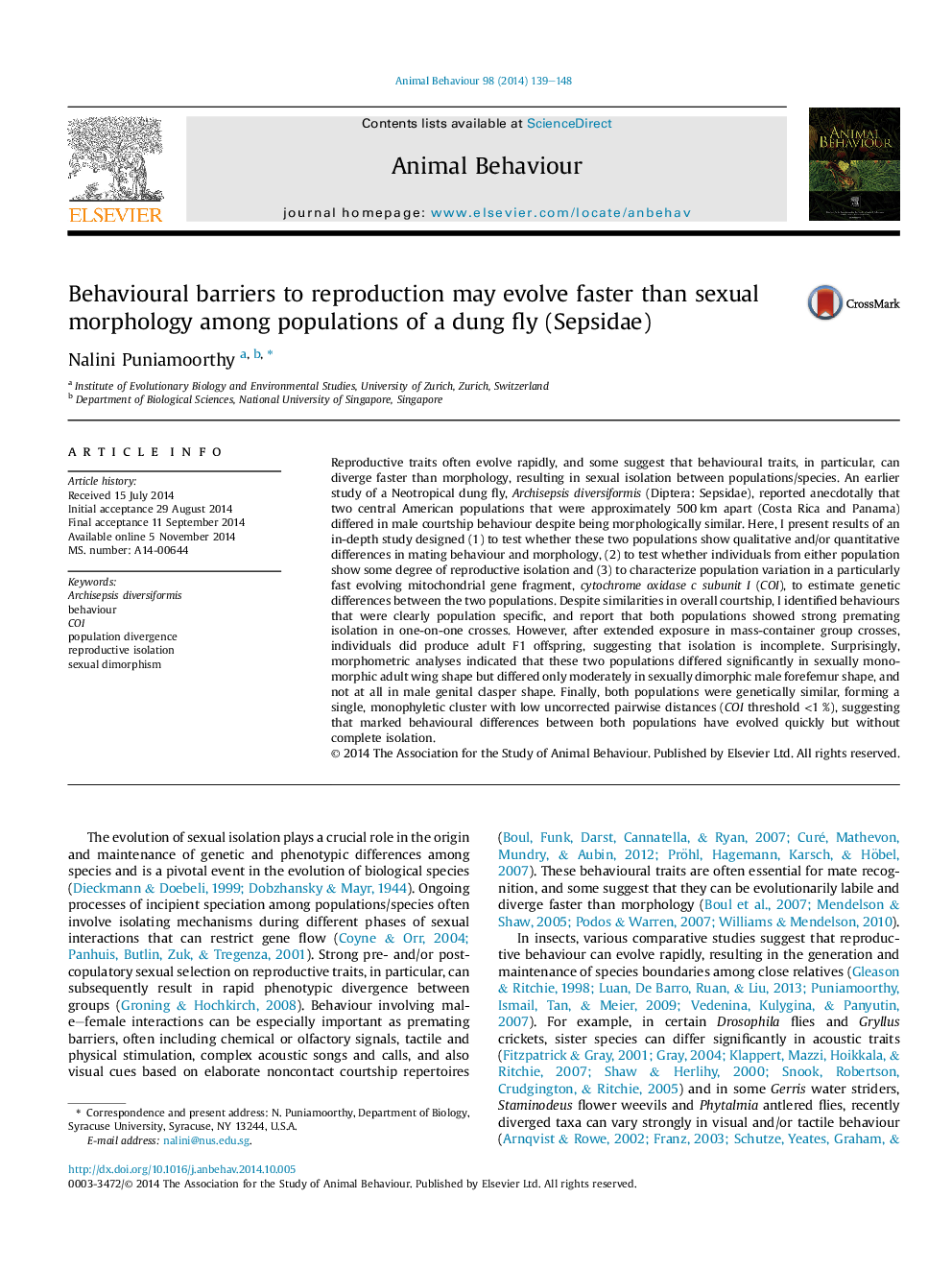| کد مقاله | کد نشریه | سال انتشار | مقاله انگلیسی | نسخه تمام متن |
|---|---|---|---|---|
| 2416335 | 1552230 | 2014 | 10 صفحه PDF | دانلود رایگان |

• Rapidly evolving reproductive traits play a crucial role in speciation.
• Here, two populations of a dung fly differ strongly in mating behaviour but not sexual morphology.
• There was incomplete isolation and high genetic similarity (COI distance <1%).
• Behavioural barriers to reproduction can evolve faster than morphology.
Reproductive traits often evolve rapidly, and some suggest that behavioural traits, in particular, can diverge faster than morphology, resulting in sexual isolation between populations/species. An earlier study of a Neotropical dung fly, Archisepsis diversiformis (Diptera: Sepsidae), reported anecdotally that two central American populations that were approximately 500 km apart (Costa Rica and Panama) differed in male courtship behaviour despite being morphologically similar. Here, I present results of an in-depth study designed (1) to test whether these two populations show qualitative and/or quantitative differences in mating behaviour and morphology, (2) to test whether individuals from either population show some degree of reproductive isolation and (3) to characterize population variation in a particularly fast evolving mitochondrial gene fragment, cytochrome oxidase c subunit I (COI), to estimate genetic differences between the two populations. Despite similarities in overall courtship, I identified behaviours that were clearly population specific, and report that both populations showed strong premating isolation in one-on-one crosses. However, after extended exposure in mass-container group crosses, individuals did produce adult F1 offspring, suggesting that isolation is incomplete. Surprisingly, morphometric analyses indicated that these two populations differed significantly in sexually monomorphic adult wing shape but differed only moderately in sexually dimorphic male forefemur shape, and not at all in male genital clasper shape. Finally, both populations were genetically similar, forming a single, monophyletic cluster with low uncorrected pairwise distances (COI threshold <1 %), suggesting that marked behavioural differences between both populations have evolved quickly but without complete isolation.
Journal: Animal Behaviour - Volume 98, December 2014, Pages 139–148